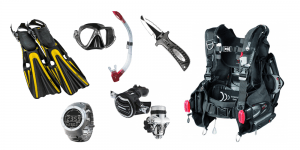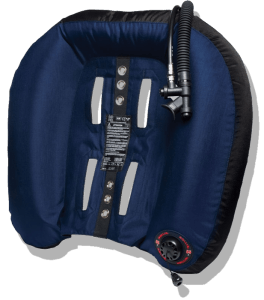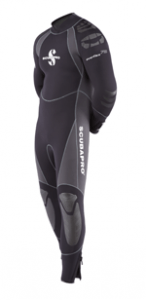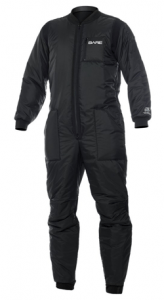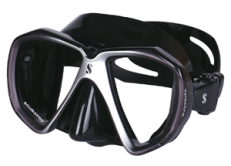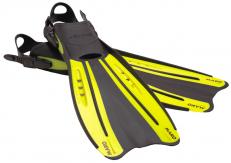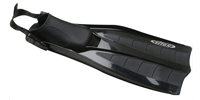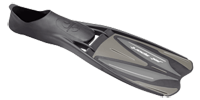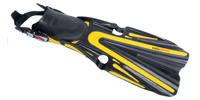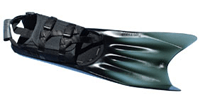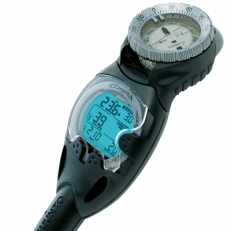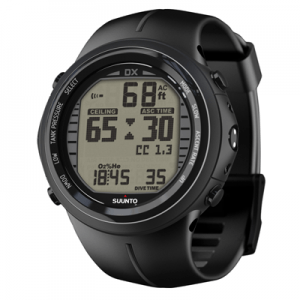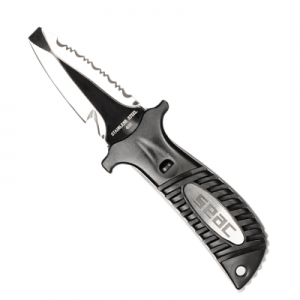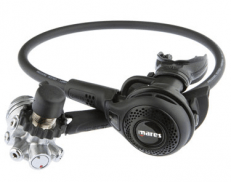Diving equipment – GearGuide
Every part of the diving equipment plays an important role. That is why you need to know how to use and maintain the parts of the equipment in the right way.
In this section you will learn the basic diving equipment and learn how to contribute to the safety and enjoyment of your diving experience.
Subjects:
- Trim vests
- Diving suits
- Fins
- Masks
- Snorkels
- Lead (belts)
- Instruments
- Surface markings
- Regulators
Trim vest
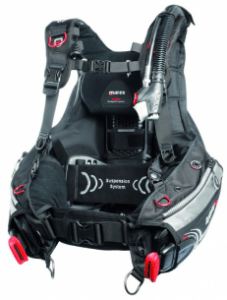 The BCD, also known as Bashjacket or BCD, is an important part of diving equipment. Divers use the BCD to stay at a certain depth and to control the buoyancy during the descent and ascent.
The BCD, also known as Bashjacket or BCD, is an important part of diving equipment. Divers use the BCD to stay at a certain depth and to control the buoyancy during the descent and ascent.
Image: Mares Hybrid MRS+ AT trimvest
Parts of a Trim vest
- Inflator: A low pressure inflator, also known as power inflator, is connected to the regulator to transport gas from the diving cylinder and the regulator to the trim vest.
- Bladder/air chamber system: This can be a single-bladder or a double-bladder. With a single bladder, the air chamber functions as the air reservoir and as the casing, while with a double bladder only the inner chamber is filled with air. The diver can let air in or out of the bladder to adjust its buoyancy, allowing the diver to move more easily under water.
- Pressure relief valve: This part bleeds the leaves when the diver has let too much air in the barge during the descent.
- Inlet valve: This valve transports the gas from the inflator to the bladders of the BCD.
- Breather valve: This allows the diver to run gas out of the bladders of the BCD.
Kinds of Trimvests
Wings
These are trim vests with the bladder on the back and on the sides. They are widely used by divers who are engaged in underwater photography and technical diving. The wings are attached to the backplate, which is attached to the diver. One of the characteristics of this type of BCD is that the bladder is not at the front of the body, leaving room for other equipment that the diver may need.
Vests / Jackets
These are inflatable trim vests, which can give buoyancy up to 25 liters. A diver wears a Jacket around his upper body.
Life jackets with adjustable buoyancy
These can give a buoyancy of 15 litres. They are cheap and lightweight. The disadvantage is that they are not comfortable since this type is worn around the neck and is fastened between the legs.
Guide to Buying Vests
- Know which type suits you best. For beginners it is advisable to wear the jacket model.
You will wear your BCD during the entire dive, so it is important that you choose one that is comfortable. In addition, you must ensure that he has the right size for your body. - Try to adjust a fully inflated BCD. This way you can check whether the BCD does not interfere with your breathing.
- Some models have buckles at the shoulders. This makes it easy to put on and take off your BCD.
- Trim vests are very important when diving, so make sure you know how to use a bobbin properly and how to maintain it.

